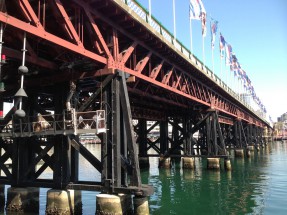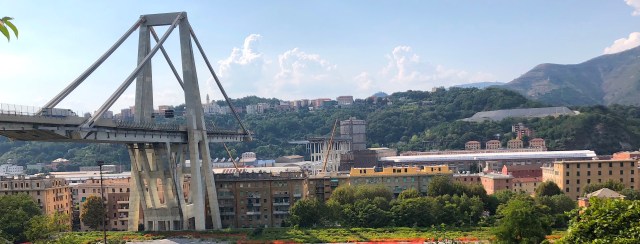Pyrmont Bridge spanning Sydney’s Cockle Bay is a 110-year-old structure of rare beauty.
Constructed from ironbark timber, steel, concrete and sandstone, the 369-metre long bridge swings open to allow boats over seven metres tall to pass and five million pedestrians cross it every year.
Despite the Darling Harbour bridge having many fans, it presents the Sydney Harbour Foreshore Authority (SHFA) with an annual inspection and maintenance headache.
Every year a team of NSW Road and Maritime Services bridge inspectors descends on the bridge to check its structural integrity, scribble notes and take photographs of any damage, collate results and colour in schematic designs with felt pens before producing a Victor Hugo-length tome three months later on the results and the suggested course of action.
But this year the bridge inspectors are armed with iPad Minis preloaded with building information modelling (BIM) software.
Inspectors will be able to access a 3-D model of the bridge on their tablets, pinpoint which of the bridge’s 7,500+ structural components they are inspecting and load their comments and photos straight into the system.
Each section will be rated from one to four, indicating which parts of the bridge need urgent attention. It means SHFA gets instant reports to ascertain how the inspection is going and begin charting the bridge’s weak or damaged sections.
SHFA Senior Facilities Supervisor Wayne Sahlman said it was obvious that a solution had to be found to the previously arduous process of collecting, analysing and reporting on critical data.
“The ability to collect inspection data and photos digitally on iPads, automatically link that data back to the 3D model and instantaneously report was of the utmost importance,” Mr Sahlman said.
Jason Lilienstein, CEO of Zuuse, which specialises in 3D BIM software for facilities managers, said Pyrmont Bridge was a complicated structure which used many different materials and the inspection process had previously been very labour intensive and old-fashioned.
“This is a very high profile, complex bridge. Now we’ve enabled them to go in with an iPad or phone and with an app they can do that all straight into an app populated with last year’s data,” Mr Lilienstein said.
“It’s synchronised at the end of every day and the client can see the results immediately. It’s a massive time saving.”
Mr Lilienstein said BIM had many positive implications for government.
Because the system maps out where everything is going in a building before it is constructed on the 3D model it can pick up mistakes, reduce delays and save money. For example, it will pick up where a pipe or an air conditioning duct clashes and where things need reworking.
BIM helps sequence work so equipment isn’t left idle and construction materials left lying about, while some parts of a building could be prefabricated off-site and slotted in later.
“When you’re talking about new big projects time is money. If it can be used to get the job done more effectively and in a shorter time frame that obviously brings fairly significant savings,” he said.
He said Defence was currently looking into using the Zuuse system to keep track of its large stock of assets and other government projects had already used it, such as the $2 billion New Royal Adelaide Hospital.
“We call it the future of facilities management. We see traditional facilities management using manual processes or traditional facilities management software in 2D with traditional functionality. There’s no connection between information gathered during design and construction and managing assets.”
Mr Lilienstein said BIM was already mandated for new buildings in the UK and Singapore but the Australian building industry, known for being hard-headed and resistant to change, had in some cases been slow to adopt it and baulked at the cost, although costs were starting to come down as the idea gained acceptance.
“There’s all this valuable information that is used during design and construction and all this information is lost. A building’s lifecycle is normally around 50 to 60 years [maintaining it] is 70 to 85 per cent of the total cost of an assets.
“It comes down to taking away manual elements and uniformed decisions to get on top of things proactively in the maintenance program before the thing blows up.”
He said that using BIM prolonged the life cycle of an asset and made life easier for facilities managers out in the field.
Comment below to have your say on this story.
If you have a news story or tip-off, get in touch at editorial@governmentnews.com.au.
Sign up to the Government News newsletter
Most read
Scathing report finds little has changed at PwC
Qld council welcomes progress on massive battery system
Inquiry to consider how federal govt can address councils’ sustainability issues
‘Local’ procurement turns out not to be so local, committee hears
Another report finds local government falling down on cyber security


